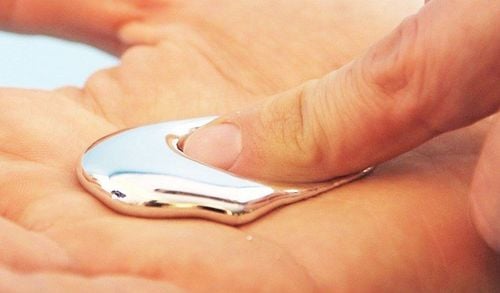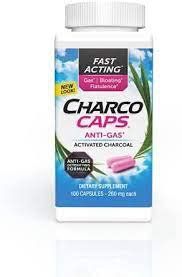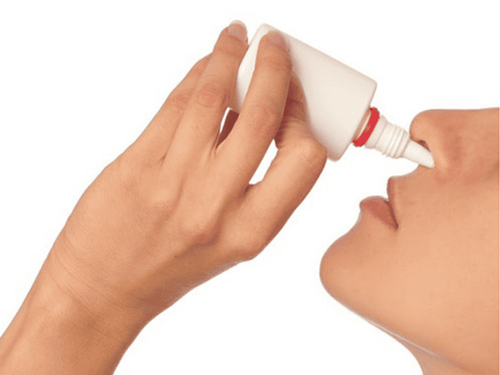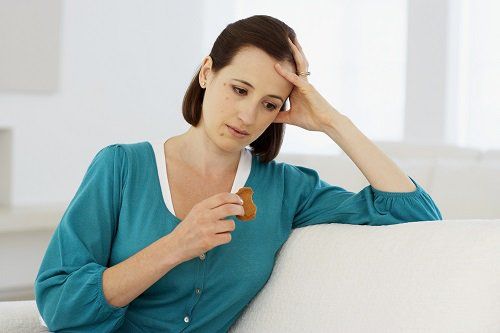This is an automatically translated article.
Naphazoline nasal drops are quite popular today, the drug is made in the form of a solution, sold without a prescription on the market. Naphazoline is also a drug that often causes poisoning in children, most often children under 3 years old.1. Naphazoline nose drops poisoning
When using Naphazolin nasal drops, you may experience the following adverse conditions:Poisoning:
When Naphazolin is instilled or sprayed into the nasal mucosa, it has a rapid and prolonged local vasoconstriction effect, reducing swelling and congestion of the nasal mucosa. If used in excess, it can cause central nervous system depression. Cyanosis syndrome may occur: hypothermia, bradycardia, sweating, drowsiness, convulsions, coma, especially in children. Naphazoline nasal drops are sympathomimetic drugs, which are derivatives of imidazoline. When instilled or sprayed into the nasal mucosa, the drug directly stimulates alpha adrenergic receptors in the arterioles, so it causes constriction of cerebral blood vessels, which is very dangerous in the middle cerebral vessels. This is the leading cause of death in children under 3 years of age when using naphazoline. Drug-induced rhinitis: In some cases, when using drugs, it causes a disease in the nose, which makes it very difficult to treat. In some cases, rhinoplasty must be performed because long-term use of naphazoline will cause inert sympathetic nervous system on the surface of the nasal mucosa, leading to no longer having the anti-congestive vasoconstrictor effect of the nose.
In fact, there have been many cases of poisoning due to incorrect use of Naphazoline nasal drops. Most of the cases of poisoning were transient and then resolved on their own, some more severe cases had to go to the emergency room at the hospital, and there were also cases of children under 3 years old dying from using this Naphazoline drug.
Common clinical symptoms such as: After giving the child Naphazoline nasal drops, the child has early symptoms within 2 hours: lethargy, somnolence, coma (due to central nervous system depression). nursery); cardiovascular symptoms due to alpha sympathetic stimulation: cold hands and feet, pale skin, increased blood pressure, bradycardia (due to parasympathetic stimulation); respiratory symptoms: slow breathing, irregular breathing, apnea (disappears on painful stimuli, crying); Severe cases have hypothermia.
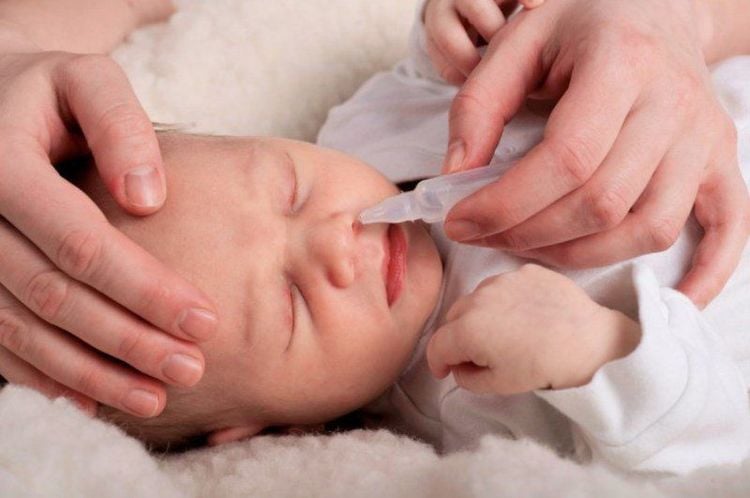
Ngộ độc thuốc nhỏ mũi Naphazolin là tình trạng thường gặp nhất ở trẻ dưới 3 tuổi
2. Indications for taking Naphazoline
To limit and prevent adverse events when using Naphazolin nasal drops, absolutely do not self-administer this drug, especially for young children. Patients should carefully read the instructions before use, should adhere to the use of the drug exactly as prescribed by a specialist.Children under 6 years old, especially infants, should not arbitrarily use Naphazoline. In case of necessity, use strictly according to the instructions and supervision of the doctor. Children under 12 years old can only use 0.05% Naphazoline solution when directed and supervised by a doctor.. Adults and children over 12 years old: Use 0.05% naphazolin solution, drop 1-2 drops Or spray into each nostril, every 3 - 6 hours, use once if needed. Children 6 - 12 years old: Use 0.025 or 0.05% Naphazoline solution under the supervision of a physician. Instill 1-2 drops or spray into each nostril a solution of naphazolin, every 6 hours as needed. To prevent stuffy nose: Naphazoline nasal drops should not be used for more than 3-5 days. Do not use the drug for people who are sensitive to any ingredient in naphazoline, do not use for people with glaucoma, angle-closure glaucoma. To avoid drug addiction, do not use repeatedly and continuously. When using naphazolin nasal drops for 3 days in a row without any improvement, the patient should immediately stop the drug and see a doctor or when there are signs of headache, nausea, hypothermia during the use of naphazoline nasal drops. need to stop the drug immediately and go to a medical facility for timely support. People with hyperthyroidism, heart disease, coronary artery disease, cerebral atherosclerosis, bronchial asthma, hypertension or diabetes, who are taking monoamine oxidase inhibitors need to be cautious when taking them. Naphazoline medicine, inform your doctor about your medical history and listen to your doctor's advice.
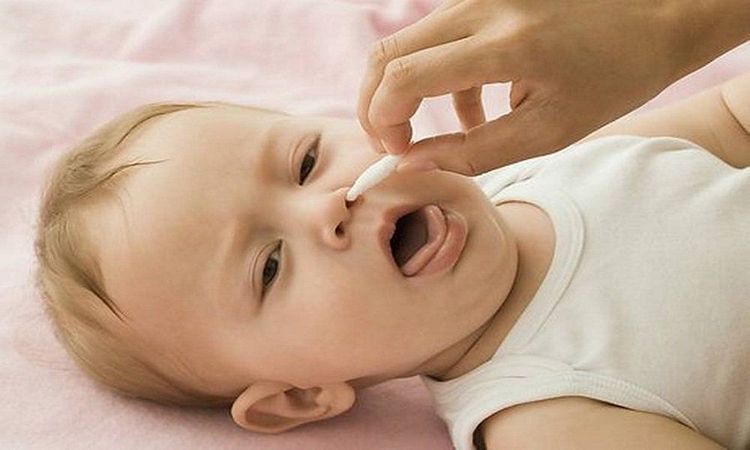
Ngộ độc thuốc nhỏ mũi Naphazolin thường xảy ra sau 2 giờ dùng thuốc
3. Naphazolin nasal drops poisoning treatment protocol
Diagnosis:Ask the patient: the child uses Naphazoline nasal drops.
Clinical examination:
Symptoms of Naphazoline nasal drops toxicity appear as early as 2 hours. Neurological symptoms such as lethargy, somnolence, coma due to Naphazoline depressants of the central nervous system. Cardiovascular symptoms due to alpha sympathetic stimulation. Cold hands and feet. Pale green. High blood pressure may occur. Due to the stimulation of the parasympathetic system, the heart rate slows down. Respiratory symptoms such as: slow breathing, irregular breathing, apnea (disappeared on painful stimuli, crying). Hypothermia in severe cases. Signs of underlying disease. Subclinical : The specialist doctor appoints some of the following tests:
Total blood cell analysis. Blood sugar. Electrolytes . ECG. Definitive diagnosis: history and clinical.
Differential diagnosis
Dengue hemorrhagic fever . Hypoglycemia. Myocarditis . Late meningoencephalitis due to vitamin K deficiency. Meningitis. Treatment:
Principles of treatment: Emergency treatment and symptomatic treatment
Emergency treatment Oxygen breathing. Intubation to help the child breathe: rarely indicated, except for apnea or prolonged apnea with cyanosis. Symptomatic treatment:
Warm up. Infusion of electrolytes in 5% Dextrose for quick recovery Monitoring:
Monitor the patient's vital signs, SpO2 every hour for the first 4-6 hours, then every 2-4 hours for 24 hours.
Prevention
Children under 6 years old should not use Naphazolin nasal drops. The safest nasal drops for children are 0.9% NaCl. Children from 6 to 12 years old use 0.05% Naphazoline solution when really needed, consult a doctor before use. Above are some signs of poisoning with naphazolin nasal drops, indications for drug use and treatment regimens when young children are poisoned with naphazolin nasal drops. Please carefully consult your doctor before use and seek medical attention immediately if there are any worrying signs.
For children to be healthy and develop well, it is necessary to have a nutritious diet in terms of quantity and quality balance. If children are not provided with adequate and balanced nutrients, it will lead to diseases of excess or lack of nutrients, which adversely affect the comprehensive development of children in terms of physical, mental and motor skills.
Children who do not eat properly are at risk of micro-mineral deficiency causing anorexia, growth retardation, malabsorption,... If they notice the above signs, parents should supplement their children with products. The supplement contains lysine, essential micro-minerals and vitamins such as zinc, chromium, selenium, and B vitamins to help fully meet the nutritional needs of children. At the same time, these essential vitamins also support digestion, enhance nutrient absorption, help improve anorexia, and help children eat well.
Parents can learn more:
Signs of zinc deficiency in children
Micronutrient deficiency and failure to gain weight in children
Please regularly visit Vinmec.com website and update useful information to take care of your child. Take care of the baby and the whole family.





